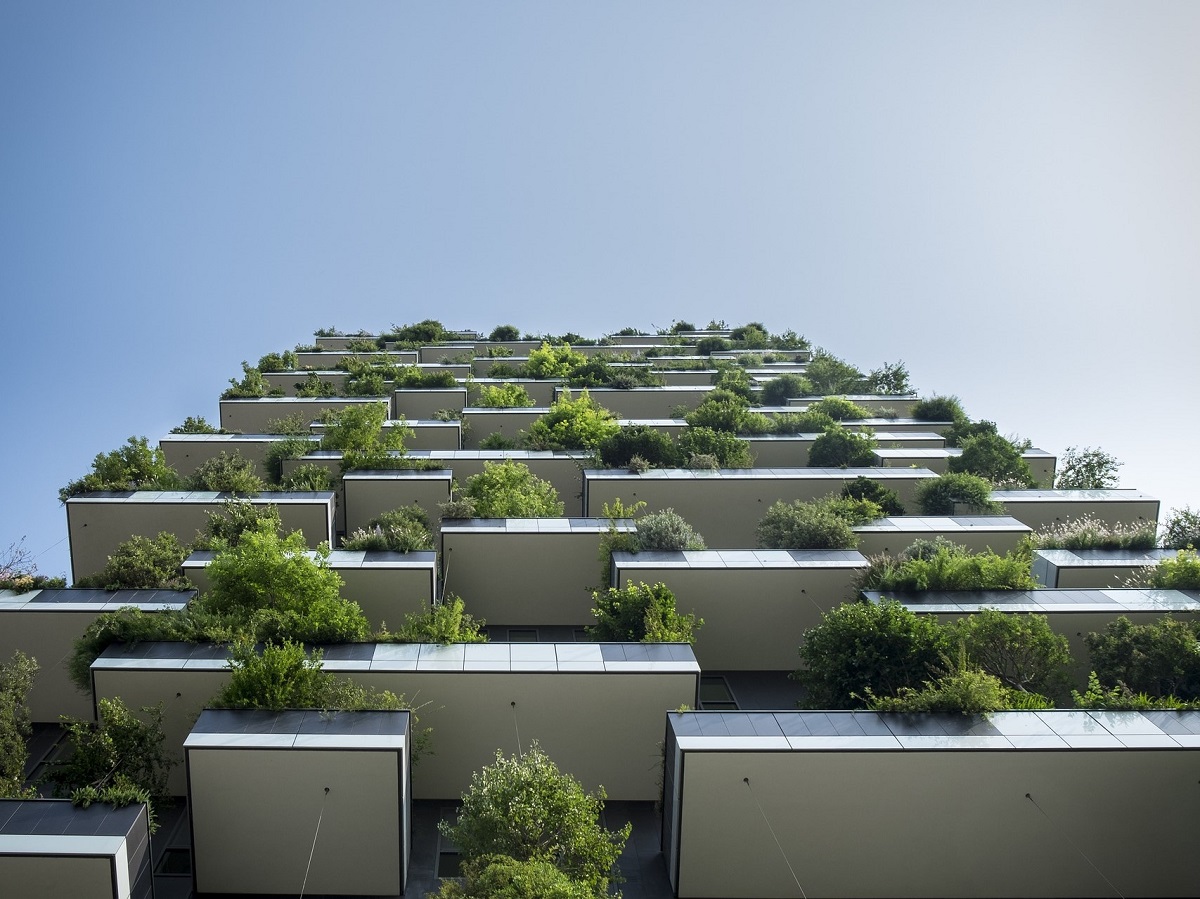3 Trends Reducing the CRE Carbon Footprint
A progress report from ULI’s Greenprint Center on climate-related legislation, economic reform and environmentally responsible investing.
A new report issued by the Urban Land Institute’s Greenprint Center for Building Performance that measured and tracked the performance of 8,916 properties across 32 countries owned by Greenprint members shows a 17 percent improvement in energy use intensity over the past decade, among other metrics. These results keep these members on track to reduce carbon emissions by 50 percent by 2030, the report finds.
Read Also: How Fighting Climate Change Can Increase Profits
The Greenprint performance report spotlights three trends that are helping real estate owners reduce their carbon footprint while maintaining healthy revenue streams: the shift towards a circular economy, climate legislation and environmentally conscious investment.
Linear vs. circular economies
Currently, we are living in a linear economy, also known as ‘take-make-dispose’ plan. Specifically, raw materials are used to make a product, which after use is simply thrown away. Include here the packaging, the product with the shortest life span.
The current linear economy has elements that have been made circular: raw material extraction, increased recycling, changing business models from product to service and new methods of financing. Sustainability does indeed exist in a linear economy, but its focus is to maximize the economic gain with a minimized environmental impact. Moreover, by circulating matter and energy through the economy, the demand for “new” input is decreased and the speed at which the entropy increases is delayed.
The circular economy is designed after the ‘reduce-reuse-recycle’ plan: materials extraction is reduced, products are made of reused parts and materials, and after discarding a product, materials and parts are recycled. Value retention can be achieved by keeping material streams as pure as possible during the complete value chain. A 100 percent closed-loop circular economy is not possible. The second law of thermodynamics demonstrates that matter has the tendency to dissipate, in other words, there will always be value loss.
Low-carbon construction materials can help mitigate a company’s embodied carbon. For example, using timber framing structures in lieu of or to significantly reduce the use of concrete and steel, both of which have high-carbon manufacturing processes. Buildings made of mass timber products such as cross-laminated timber have strength and stability comparable to steel and concrete while also storing carbon absorbed by the trees while growing.
Climate legislation on building performance
An increasing number of cities have set energy benchmarking policies for buildings. In the U.S., for example, at least 31 cities have set rigorous climate goals that will affect building performance overall–from costs during development through operations and eventually, transactions. Of these, 15 cities require that structures meet performance targets or undertake additional actions like energy audits. This number is expected to grow as 287 U.S. cities and counties have signed onto the We Are Still In pledge to remain in the Paris Climate Accord.
Leading the way in addressing carbon emissions in real estate are California, New York City, Washington, D.C and the United Kingdom.
California’s Energy Efficiency Strategies Plan set goals for all new residential construction to achieve net-zero energy by 2020, all new commercial construction to be NZE by 2030 and 50 percent of commercial buildings to retrofit to NZE by 2030. Santa Monica took things a step further and enacted a net-zero building code in October 2016 and Berkeley mandated in July 2019 that all new buildings be all-electric.
New York City has passed Law 97, as part of the city’s larger 2019 Climate Mobilization Act and sets carbon emissions limit for the commercial buildings sector. By 2024 and 2030 deadlines, buildings must reduce their emissions below limits set by property type. Failure to comply with this legislation will result in fines estimated to be as high as $2 per square foot.
Washington, D.C.’s new Clean Energy DC law expands the mandatory benchmarking program to all buildings larger than 10,000 square feet and building energy performance standards are currently being developed. Buildings that fail to meet these standards by 2020 will have five years to improve their energy performance, follow a prescriptive improvement plan, or pay significant fines.
The United Kingdom passed a law in 2018 that targets commercial properties with an energy performance rating of F or G (on a scale from A to G, with G being the worst). These will no longer be re-leased. By 2020, the requirements will apply to both new and existing leases in residential properties, and by 2023, the same requirements will apply to commercial leases. Currently, about 18 percent of commercial properties and 10 percent of residential properties in England and Wales are in the F or G categories, which means that about $838 billion in asset value will be unrentable, according to the report’s analysts.
Investor involvement
Real estate investors are increasingly asking real estate owners and asset managers for more information on their real estate funds’ environmental, social and governance programs before determining their investment strategy. ESG initiatives are perceived as material to long-term investment returns and as a consequence, an increasing number of real estate organizations are reporting on their portfolio’s environmental performance.
The most common initiatives are the Global Real Estate Sustainability Benchmark, the Carbon Disclosure Project, Global Reporting Initiative and Task Force on Climate-Related Financial Disclosure. According to the ULI report, investor interest in ESG varies by geography, led by Australian investors and followed by European and U.S. coastal investors.








You must be logged in to post a comment.